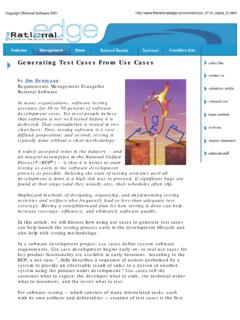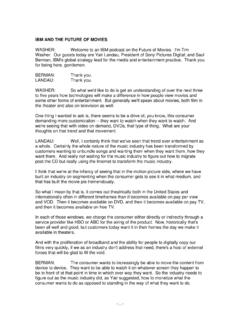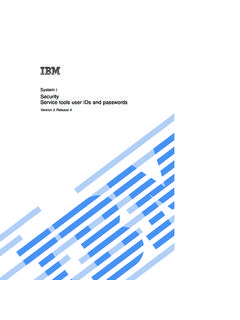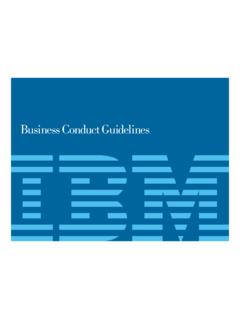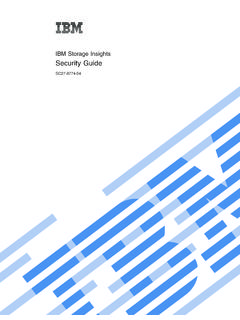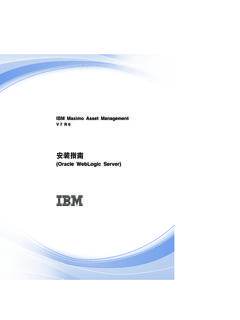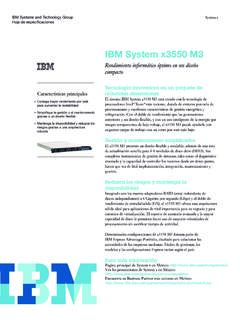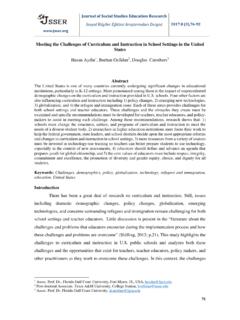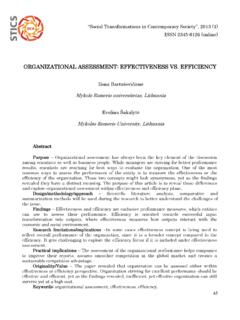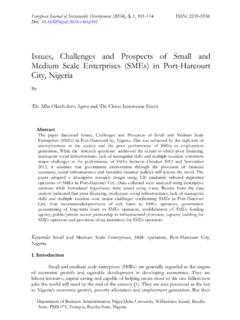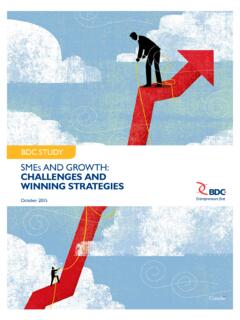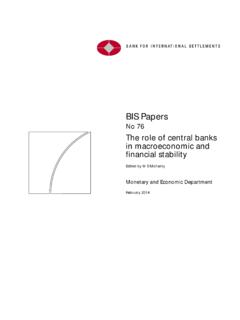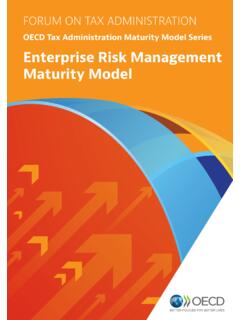Transcription of The Total Economic Impact™ Of IBM’s Design Thinking …
1 A Forrester Total Economic Impact Study Commissioned By IBM February 2018 The Total Economic Impact Of IBM s Design Thinking Practice How IBM Drives Client Value And Measurable Outcomes With Its Design Thinking Framework Table Of Contents Executive Summary 1 Key Findings 1 TEI Framework And Methodology 3 Isolating IBM Design Thinking s Business Impact 4 Design Early, Design Right 4 Design Thinking s Value Proposition 5 What This Study Is .. And What It Is Not 5 Voice Of The Market 6 Survey Respondent Demographics 6 Awareness Of IBM s Design Thinking Practice 7 maturity Of Design Thinking Practices 8 Drivers Of Adoption 9 Instrumenting Change 10 Business Impacts 11 Perceptions And Looking To The Future 13 IBM s Client Journey 14 Interviewed Organizations 14 Key challenges 14 Engaging IBM 15 Key Results 15 Modeling The Composite Organization 16 Per-Project Financial Analysis 17 Reduced Design Costs 19 Reduced Development And Testing Costs 20 Reduced Maintenance Costs 21 Increased Profit From Faster Time-To-Market 22 IBM Design Thinking Costs Per Project 23 Composite Financial Analysis 24 Faster Project Design And Development 24 Reduced Risk
2 And Increased Portfolio Profitability 25 Streamlined Organizational Process Efficiency 27 Unquantified Benefits 29 Flexibility 30 Project Design Thinking Costs 31 Design Thinking Education And Advocacy 31 Design Thinking Employee Training 32 Financial Summary 34 Appendix A: Total Economic Impact 36 Appendix B: Calculation Tables 37 Per-Project Benefit Calculation Tables 37 Per-Project Cost Calculation Tables 40 Composite Benefit Calculation Tables 41 Composite Cost Calculation Tables 44 Project Director: Benjamin Brown ABOUT FORRESTER CONSULTING Forrester Consulting provides independent and objective research-based consulting to help leaders succeed in their organizations. Ranging in scope from a short strategy session to custom projects, Forrester s Consulting services connect you directly with research analysts who apply expert insight to your specific business challenges .
3 For more information, visit 2018, Forrester Research, Inc. All rights reserved. Unauthorized reproduction is strictly prohibited. Information is based on best available resources. Opinions reflect judgment at the time and are subject to change. Forrester , Technographics , Forrester Wave, RoleView, TechRadar, and Total Economic Impact are trademarks of Forrester Research, Inc. All other trademarks are the property of their respective companies. For additional information, go to 1 | The Total Economic Impact Of IBM s Design Thinking Practice Executive Summary Design Thinking places end users at the center of the Design process and enables teams to collaborate and work more efficiently. IBM leverages this framework in their Design Thinking practice across its diverse portfolio of products and services to help clients reduce costs, increase speed, and Design better solutions.
4 IBM commissioned Forrester Consulting to conduct a Total Economic Impact (TEI) study and examine the potential return on investment (ROI) enterprises may realize by engaging IBM s Design Thinking practice. The purpose of this study is to provide readers with a framework to evaluate Design Thinking s potential financial impact for both individual projects and a grander organizational transformation. To better understand the benefits, costs, and risks associated with this investment, Forrester interviewed four of IBM s Design Thinking clients and surveyed an additional 60 executives who have employed Design Thinking at their organizations, some with and some without IBM. These organizations turned to Design Thinking to address a variety of challenges : Refine business strategy to invest in solving the most promising opportunities while mitigating the risk of bad investments.
5 Remedy an inhibiting No culture by energizing and empowering employees to think creatively without fear of failure or retribution. Design better products to improve customer experience (CX) and sales. Speed up sluggish project Design and execution. Streamline burdensome processes to reduce overhead. Interviewees found that IBM s Design Thinking practice successfully partnered with their organizations to address these challenges and enhance culture, speed, efficiency, customer experience, and profitability. Key Findings Quantified benefits. The following risk-adjusted quantified benefits are representative of those experienced by the organizations interviewed: Project teams doubled Design and execution speed with IBM Design Thinking .
6 Profits from faster releases combined with reduced Design , development, and maintenance costs to deliver $678K per minor project and $ per major project, for $ in Total value. Organizations slashed the time required for initial Design and alignment by 75%. The model demonstrates cost savings of $196K per minor project and $872K per major project. Project teams leveraged better designs and user understanding to reduce development and testing time by at 33% This equates to cost savings of $223K per minor project and $ per major project. IBM s Design Thinking practice helped projects cut Design defects in half. Projects were more successful in meeting user needs, thereby reducing Design defects and subsequent rework to save $77K per minor project and $153K per major project.
7 Faster time-to-market enabled increased profits from net-new customers and the higher present value of expected profits. Faster time-to-market increased profits by $182K per minor project and $ per major project. Benefits And Costs IBM s Design Thinking practice cuts costs by accelerating projects: $ million IBM s Design Thinking practice reduces risk and increases portfolio profitability: $ million 2x Faster time-to-market 75% Reduced Design time 33% Reduced development time 2 | The Total Economic Impact Of IBM s Design Thinking Practice Human-centered Design improved product outcomes, reduced the risk of costly failures, and increased portfolio profitability. Refined strategic prioritization enabled investments in solutions that were less likely to fail.
8 Better Design increased average product profits. IBM helped expand Design Thinking at the organization over three years to penetrate one quarter of the entire portfolio, enabling $ in increased profits. Cross-functional teams collaborated to share problems and find solutions, reducing costs by $ in streamlined processes. Survey Highlights. Data from sixty survey respondents provided the following notable insights: Improved collaboration and business strategy drove increased customer experience and sales, streamlined processes, and reduced project labor. 52% of survey respondents associated IBM with Design Thinking . 72% of IBM clients utilize Design Thinking in most or all teams. Unquantified benefits.
9 The interviewed organizations experienced the following benefits, which are not quantified for this study: Encouraged an empowered, engaged, and happy workforce. Enhanced KPIs such as UI, UX, CX, NPS, and brand energy. Perfected internal processes for HR, sales, and beyond. Costs. The interviewed organizations experienced the following risk-adjusted costs: Internal labor and IBM fees for projects totaled $ , driven by distinct costs of $159K per minor project and $ per major project. Transformation costs reached $5M in IBM resources and internal labor. Training incurred costs of $218K in IBM facilitation and internal labor. Forrester s interviews with four existing IBM clients, data from 60 survey respondents, and subsequent financial analysis found that a composite organization based on these interviewed organizations experienced benefits of $48,360,958 over three years versus costs of $12,045,247 by engaging with IBM s Design Thinking practice, adding up to a net present value (NPV) of $36,315,711 and an ROI of 301%.
10 -$20M-$10M$0M$10M$20M$30M$40M$50 MInitialYear 1 Year 2 Year 3 Financial Summary (Three-Year) Total benefitsTotal costsCumulative net benefits$ $ $ productdesign anddevelopmentIncreased portfolioprofitability frombetter productoutcomesStreamlinedorganizational process efficiencyBenefits (Three-Year)ROI 301% Benefits PV $ million NPV $ million 3 | The Total Economic Impact Of IBM s Design Thinking Practice TEI Framework And Methodology From the information provided in the interviews, Forrester has constructed a Total Economic Impact (TEI) framework for those organizations considering engaging IBM s Design Thinking practice. The objective of the framework is to identify the cost, benefit, flexibility, and risk factors that affect the investment decision.
